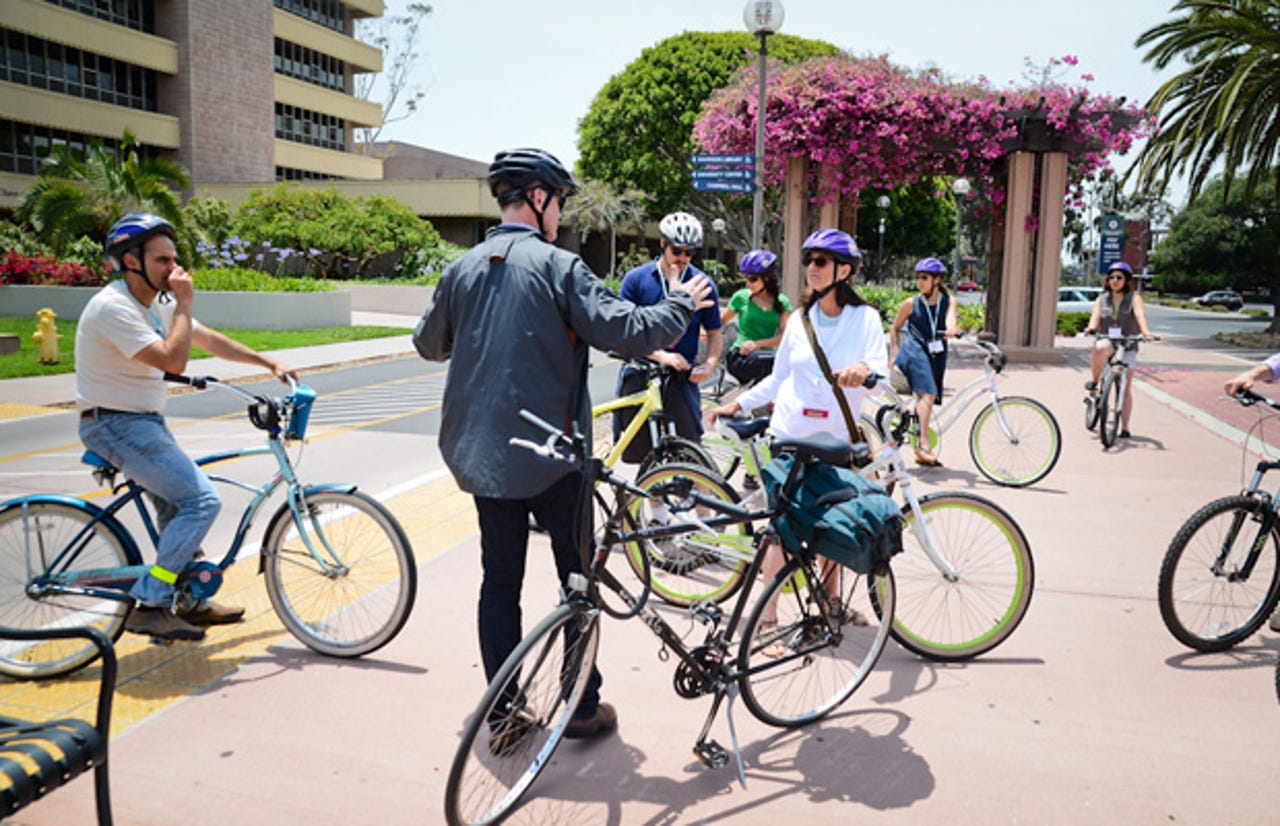Top 10 greenest universities in the U.S., 2013 edition (photos)


No. 10: University of California, Santa Barbara (Santa Barbara, California)
Each year, Sierra magazine, the official publication of the Sierra Club, ranks colleges on their green street cred. This year's top 10 are breaking new ground whether it's a biodiesel plant, a goal to be carbon neutral by the end of the decade or a system to source locally grown foods. Here's a look at this year's picks; the complete rankings can be found here.
Nearly 47 percent of academic departments offer a class about sustainability, 50 percent of food served on campus is locally sourced and 75 percent of waste is diverted from the landfill via recycling and composting. And UCSB isn't slowing down. The college has a goal to keep 100 percent of its waste out of the landfill by 2020.
Earlier this year, the college hosted the California Higher Education Sustainability Conference, which brought together 900 attendees from 80 institutions and organizations. The multi-day conference included a bike tour of the campus (pictured).
Photo: UCSB
This post was originally published on Smartplanet.comNo. 9: American University (Washington, D.C.)
American University is aiming to be carbon neutral by the end of the decade, a goal that the impressed Sierra Club. So far, the college has installed a 27-kilowatt solar array, D.C.'s biggest solar hot-water system and uses a contraption that turns old cooking old into electricity. About 30 of the university's buildings are on track for LEED Silver certification and a new campus-wide composting program has reduced its waste by 66 percent.
Photo:American University/Jeff Watts
This post was originally published on Smartplanet.comNo. 8: Georgia Institute of Technology (Atlanta, Georgia)
This 440-acre campus has managed to keep its carbon footprint in check in spite of its growth. All infrastructure built after 2008 is LEED certified and a 1.4-million-gallon stormwater cistern helps conserve water. The EPA even named Georgia Tech one of the best places for commuters for its wide swath of eco-transit options.
Photo: Georgia Tech
This post was originally published on Smartplanet.comNo. 7: Stanford University (Palo Alto, California)
The university has raised $430 million for its Initiative on the Environment and Sustainability. Part of those funds will go towards a new energy facility that aims to halve the 8,180-acre campus' carbon emissions and cut its water use by nearly a fifth.
This month, students installed rows of thin-film solar panels on its Stanford Start.Home project, the college's entry in this year's Solar Decathlon (pictured).
Photo: Stanford University
This post was originally published on Smartplanet.comNo. 6: Green Mountain College (Poultney, Vermont)
The heart of this small liberal arts school is an environmental mission. The college offers a 37-credit environmental liberal arts program, which all students complete. The college has a $5.8 million biomass plant that burns locally sourced woodchips to heat 85 percent and power 20 percent of its buildings.
Photo: Green Mountain College
This post was originally published on Smartplanet.comNo. 5: Cornell University (Ithaca, New York)
The university has developed a plan for sustainability to be a guiding principle in all campus operations and specifically for its climate action plan. Cornell has pledged to become a net-zero carbon campus by 2050 and the university has set up a series of sustainable campus focus teams covering buildings, energy, food, land and waste, among others. The university has managed to add more than 1 million square feet of new construction without using additional power. The Human Ecology building (pictured) was the first building on the Cornell campus to achieve LEED Platinum certified.
Photo: Cornell University
This post was originally published on Smartplanet.comNo. 4: University of California, Davis (Davis, California)
This college, known for its environmental sciences, shines when it comes to its sustainable-focused curriculum, its waste reduction methods and water use. UC Davis, home to the nation's largest planned zero-net energy community, topped Sierra magazine's list last year.
Photo: UC Davis
This post was originally published on Smartplanet.comNo. 3: University of California, Irvine (Irvine, California)
The college has committed to minimizing its ecological footprint by reducing emissions, cutting electricity use and requiring all new buildings to meet at least the LEED Silver certification. The college offers a guide to sustainable transportation to help connect students find convenient and eco-friendly ways to get around.
Photo: University of California, Irvine
This post was originally published on Smartplanet.comNo. 2: Dickinson College (Carlisle, Pennsylvania)
Dickinson received high marks from the Sierra Club for its sustainably-focus instruction and research opportunities as well asco-curricular offerings such as the biodiesel fuel program and Eco-Reps, a peer-to-peer student program that encourages sustainable campus living.
The school also generates enough wind power to offset all electrical needs, converts cooking grease into biodiesel fuel and serves student-grown veggies in the cafeteria.
Photo: Dickinson College
This post was originally published on Smartplanet.comNo. 1: University of Connecticut (Storrs, Connecticut)
The Sierra Club name the University of Connecticut the "coolest school" for its sweeping efforts to encourage sustainability and green technology. The university offers more than 600 classes related to sustainability, it has reduced its water use by 15 percent since 2005 and serves locally sourced food in its dining facilities. This year, UCoon opened its reclaimed water facility, capable of treating up to 1 million gallons of wastewater each day for use at the on-campus power plant.
The university also topped the GreenMetric World Ranking.
Photo: University of Connecticut
This post was originally published on Smartplanet.com